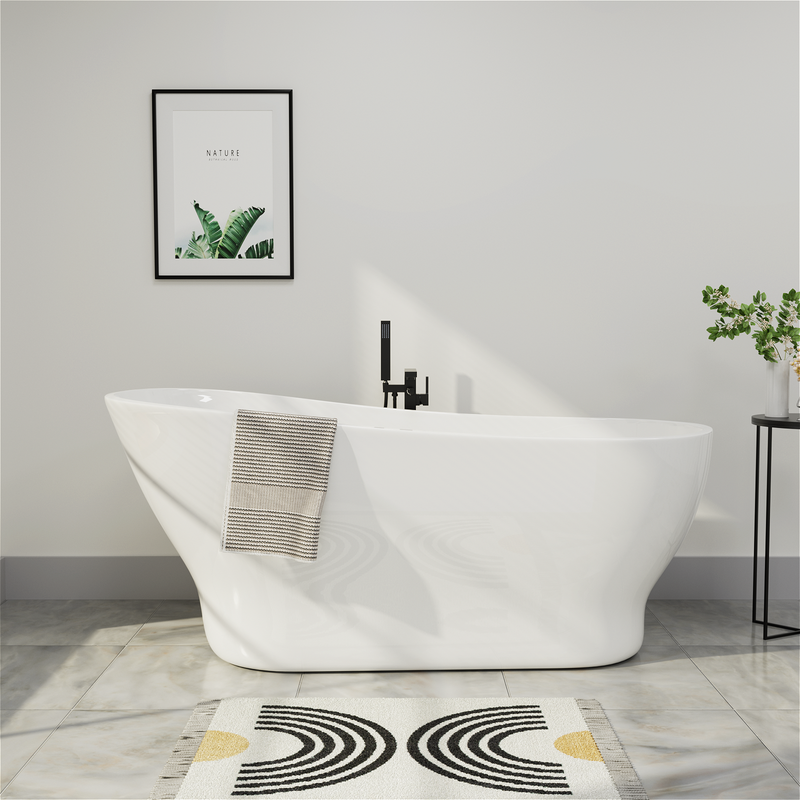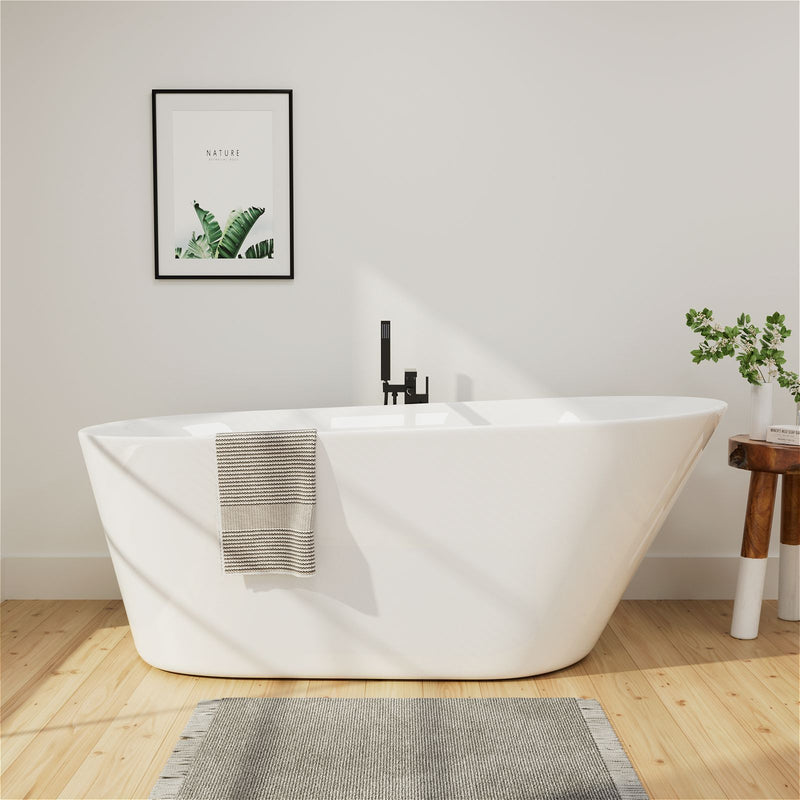Finding yellow water filling your bathtub can be alarming and unpleasant. You immediately wonder whether the water is safe and what could be causing the discoloration. The good news is that yellow bathwater is a common issue with a range of understandable causes, most of which are temporary and easily solvable. The discoloration typically stems from minerals, sediments, or corrosion within your plumbing system or the broader public water mains. This comprehensive guide will explore the primary reasons behind yellow bathwater, provide actionable steps to clear it up, and advise you on when it's time to call a professional. Understanding the root cause is the first step toward restoring your water's clarity and ensuring your peace of mind.
Common Causes of Yellow Bathtub Water
The appearance of yellow or brownish water is almost always due to the presence of oxidized iron sediments—essentially rust—suspended in the water supply. How that rust gets into your water involves several different mechanisms, from your own home's pipes to the municipal water mains in the street.
Corroding Pipes and Fixtures
One of the most frequent sources of yellow water is the corrosion of metal pipes and fixtures. Many older homes have galvanized steel or iron water pipes. Over time, the protective zinc coating on the inside of these pipes wears away, exposing the raw iron to water and oxygen. This exposure leads to rust, which flakes off into the water flow. When you turn on the tap, especially after it hasn't been used for a few hours, these loose rust particles are carried along, resulting in yellow or brown water.

Similarly, the issue might not be your pipes but your water heater. Hot water often appears discolored more frequently because heating accelerates the corrosion process inside the heater's tank. If you only see yellow water from your hot water taps, it's a strong indicator that your water heater is the culprit. The anode rod, which is designed to prevent tank corrosion, can also degrade and contribute to sediment buildup.
Disturbances in the Water Main
The public water system is a vast network of pipes, and any disturbance to it can send sediment into your home. Municipal water agencies routinely perform system maintenance, flushing, or testing. These activities require high water flow rates, which can scour the interior of the pipes, dislodging built-up sediment and rust. If you notice yellow water coinciding with construction or fire hydrant use in your neighborhood, this is the likely cause.
A more dramatic disturbance occurs when a water main breaks. The influx of soil and the surge of water from the break can send a large amount of sediment through the system. While the water company works to isolate and repair the break, nearby homes might experience discolored water for a short period.
Mineral Content and Water Hardness
In some cases, the yellow tint can be related to the natural mineral content of your water supply. Water with a high iron and manganese content can appear yellow or brown when it comes out of the tap. This is more common in homes that use well water, but it can also affect municipal supplies. When these minerals are present in high concentrations, they can oxidize, leading to discoloration and potentially staining your bathtub and sinks.
Effective Solutions for Yellow Bathwater
Before you become too concerned, know that most instances of yellow water are temporary. The following steps can help you diagnose the source and clear up the problem.
Immediate Actions to Take
Identify the Source: First, determine if the problem is with both hot and cold water or just one. Fill the bathtub with cold water and observe the color. Then, do the same with only hot water. If the issue is only with hot water, your water heater is almost certainly the source. If it's with both, the problem is likely in the cold water lines, either in your home's plumbing or the public main.
Flush Your System: The simplest and most effective first step is to flush your home's plumbing. Start by turning on the cold water tap closest to your water meter and letting it run for at least 3-5 minutes. Check if the water runs clear. If it does, move on to flushing other cold water taps in the house, and finally the hot water taps by letting the water heater tank refill with clean water.
Avoid Using Hot Water: If you suspect a problem with the public water main, avoid using hot water until the cold water clears up. Drawing discolored water into your water heater tank will trap the sediment there, prolonging the problem for your hot water supply.
When to Call a Professional
If flushing your system does not resolve the issue, it may be time to seek professional help.

Persistent Yellow Water: If the yellow color returns frequently or never goes away, you may have significant internal corrosion of your home's plumbing. A licensed plumber can perform an inspection and will likely recommend replacing old galvanized pipes with modern materials like copper or PEX that do not corrode.
Water Heater Issues: For persistent discoloration in your hot water, a plumber can flush your water heater tank to remove sediment. If the tank itself is old and corroding, it may need to be replaced to permanently solve the problem.
Installing a Filtration System: For issues related to high mineral content in your water supply, whether from a well or the city, a whole-house water filtration system or an iron filter can be an excellent long-term solution. These systems are designed to remove sediment, rust, and minerals before the water enters your home's taps and appliances.
Prevention and Long-Term Maintenance
Preventing yellow water is centered on managing the corrosion and sediment in your pipes.
Regular Flushing: If you have older plumbing or live in an area with known sediment issues, periodically flushing your water heater (annually) and letting your taps run for a minute after returning from a trip can help prevent sediment buildup.
Pipe Replacement: The most definitive preventive measure is to upgrade your home's plumbing system. Replacing aging iron pipes with corrosion-resistant materials is a long-term investment in your home's water quality and health.
Water Quality Test: If you are concerned about the mineral content or safety of your water, you can have it tested. Many local health departments or private labs offer this service, which can give you a clear picture of what is in your water and guide your filtration choices.
FAQs
Is yellow bathwater safe to bathe in?
While it is not aesthetically pleasing, yellow water caused by iron and sediment is generally not harmful to skin contact for short periods. However, it is not recommended for drinking or cooking. The water may stain your skin or bathtub, and it's best to wait until it clears before using it.
Why is only my hot bathwater yellow?
This is a classic sign of a problem with your water heater. The heating process can accelerate corrosion inside the tank, causing sediment to build up and discolor the hot water. You may need to flush your water heater or have it inspected by a professional.
I've flushed my pipes, but the water is still yellow. What's wrong?
If extensive flushing doesn't work, the issue could be a significant buildup of sediment in your home's main plumbing lines or a persistent problem with the public water main supplying your home. In this case, contact your local water utility to see if there are known issues in your area. If not, it's time to call a plumber.
Can yellow water stain my bathtub and fixtures?
Yes, water with a high iron content can cause reddish-brown staining on porcelain bathtubs, sinks, and toilet bowls. These stains can often be cleaned with commercial cleaners designed for rust removal or a paste made from baking soda and vinegar.
My neighbors don't have yellow water. Why do I?
This strongly suggests that the problem is isolated to your home's internal plumbing. The most likely cause is the corrosion of your own pipes, particularly if you have older galvanized steel pipes while your neighbors have updated their plumbing.
What should I do if the yellow water appears suddenly after a trip?
When water sits stagnant in pipes for a few days, it has more time to react with the metal, loosening rust and sediment. Simply run the water for several minutes to flush out the standing water from your home's pipes. The water should clear up.
Conclusion
Discovering yellow water in your bathtub is understandably concerning, but it's a problem that can usually be diagnosed and resolved. In most cases, the discoloration is caused by harmless rust particles stirred up from your home's plumbing or the municipal water mains. Your first response should always be to flush your system. If the problem is isolated to your hot water, turn your attention to the water heater. Persistent yellow water is a telltale sign of aging, corroded pipes that may need to be replaced by a professional plumber. By understanding these common causes and solutions, you can quickly restore your water's clarity and ensure the long-term health of your home's plumbing system.





